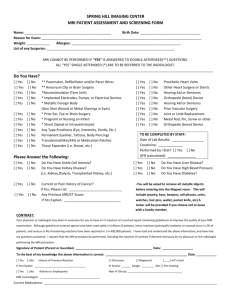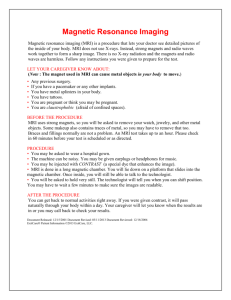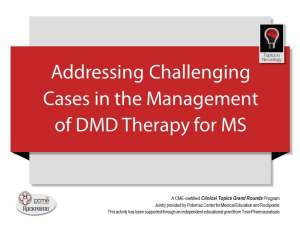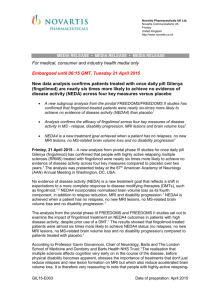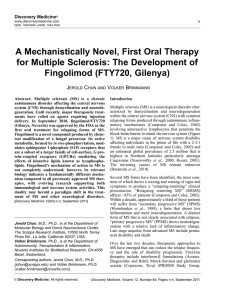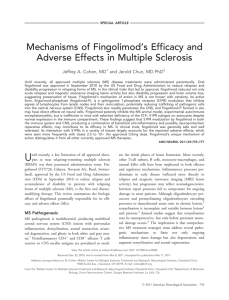gilenya_mri_responders_aan_2015
advertisement
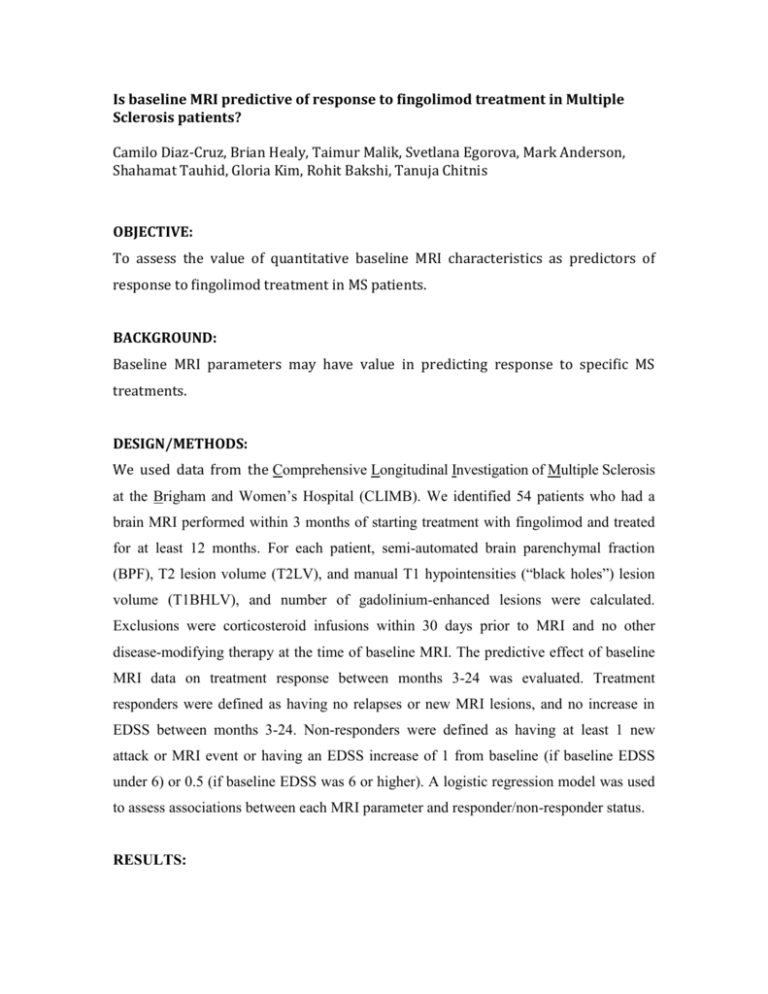
Is baseline MRI predictive of response to fingolimod treatment in Multiple Sclerosis patients? Camilo Diaz-Cruz, Brian Healy, Taimur Malik, Svetlana Egorova, Mark Anderson, Shahamat Tauhid, Gloria Kim, Rohit Bakshi, Tanuja Chitnis OBJECTIVE: To assess the value of quantitative baseline MRI characteristics as predictors of response to fingolimod treatment in MS patients. BACKGROUND: Baseline MRI parameters may have value in predicting response to specific MS treatments. DESIGN/METHODS: We used data from the Comprehensive Longitudinal Investigation of Multiple Sclerosis at the Brigham and Women’s Hospital (CLIMB). We identified 54 patients who had a brain MRI performed within 3 months of starting treatment with fingolimod and treated for at least 12 months. For each patient, semi-automated brain parenchymal fraction (BPF), T2 lesion volume (T2LV), and manual T1 hypointensities (“black holes”) lesion volume (T1BHLV), and number of gadolinium-enhanced lesions were calculated. Exclusions were corticosteroid infusions within 30 days prior to MRI and no other disease-modifying therapy at the time of baseline MRI. The predictive effect of baseline MRI data on treatment response between months 3-24 was evaluated. Treatment responders were defined as having no relapses or new MRI lesions, and no increase in EDSS between months 3-24. Non-responders were defined as having at least 1 new attack or MRI event or having an EDSS increase of 1 from baseline (if baseline EDSS under 6) or 0.5 (if baseline EDSS was 6 or higher). A logistic regression model was used to assess associations between each MRI parameter and responder/non-responder status. RESULTS: Using univariate analysis, we found that individual baseline MRI features T2LV, BPF, T1BHLV, and number of gadolinium enhancing lesions were not significantly associated with the probability of treatment response (p>0.5 for each predictor). When all predictors were included in the model together, none were significantly associated with responder status. CONCLUSIONS: Baseline quantitative MRI data did not predict response to fingolimod in this real world cohort. Further studies will examine a second MRI timepoint, as well effects of additional clinical and biomarkers in predicting treatment response to fingolimod. STUDY SUPPORT: Novartis Logistic regression results: Univariate models: BH1: estimated coefficient= -0.067, SE = 0.16, p-value= 0.674 BPF1 (percent): estimated coefficient= -0.010, SE = 0.062, p-value= 0.871 T2LV1: estimated coefficient= -0.019, SE = 0.085, p-value= 0.823 Combined model: BH1: estimated coefficient= -0.224, SE = 0.36, p-value= 0.533 BPF1 (percent): estimated coefficient= -0.034, SE = 0.072, p-value= 0.632 T2LV1: estimated coefficient= 0.078, SE = 0.18, p-value= 0.667





